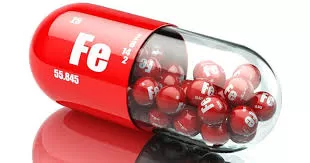Binghamton University study examines the complex relationship between iron and infectious disease in Nigerian healthcare workers.
Our immune systems rely on iron to function, but so do invading viruses and bacteria. A new study from Binghamton University, State University of New York, sheds light on how iron levels in the body can influence susceptibility to COVID-19. Conducted among healthcare workers in Nigeria during the pandemic’s Delta wave, the research explores the evolutionary trade-offs in iron metabolism and its role in disease vulnerability.
Published in the journal Evolution, Medicine, and Public Health, the study was led by Binghamton University Associate Professor of Anthropology Katherine Wander, alongside 34 co-authors, including personnel from Nigerian hospitals and universities. The research found that both high iron levels and anemia were linked to increased risk of COVID-19 infection, while mild to moderate iron deficiency did not provide clear protection against the virus.
The Iron Paradox
Iron is a critical element for bodily functions, aiding in oxygen transport via hemoglobin and playing a key role in immune responses. However, it is also a vital resource for pathogens. Viruses, including SARS-CoV-2, can hijack iron-dependent cellular machinery to facilitate replication and spread within the host.
“Our pathogens need iron for the same reasons we do,” Wander explained. “A virus hijacks the cellular machinery to make more virus. Often, viruses increase the cellular uptake of iron.”
This continuous battle between host and pathogen is part of an evolutionary arms race, where humans have developed mechanisms to regulate iron absorption and storage. In response, bacteria and viruses rapidly evolve strategies to bypass these defenses, often at a pace much faster than the human immune system can adapt.
Insights from Nigerian Healthcare Workers
The study focused on healthcare workers in four Nigerian hospitals, most of whom had received AstraZeneca vaccinations. Researchers examined their iron levels and susceptibility to COVID-19, revealing a significant association between iron availability and infection risk. Those with high iron levels were more prone to infection, as were individuals with anemia, suggesting that iron regulation plays a crucial role in immune defense.
The Evolutionary Perspective
The findings support the optimal iron hypothesis, which suggests that there is a delicate balance in iron levels that minimizes infection risk while supporting bodily functions. Wander noted that iron deficiency is common, even in well-nourished populations, and may persist as a protective evolutionary adaptation against infectious diseases.
“Any additional increment of iron is going to come with both potential benefits in terms of immune defense and potential risk from an infectious agent,” Wander said. “The trade-off is always there, but the optimal level is going to shift depending on the infectious disease environment.”
Implications and Future Research
Understanding these trade-offs can have significant implications for global health policies, particularly in nutrition and disease prevention. While iron supplementation is commonly used to address anemia, its impact on infection risk warrants further study.
The research underscores the complexity of human adaptation and disease interactions, highlighting the need for personalized approaches to nutrition and healthcare in varying infectious disease environments.
Disclaimer:
This article is based on scientific research and is intended for informational purposes only. It should not be considered medical advice. Individuals should consult healthcare professionals regarding iron intake and disease prevention strategies.












